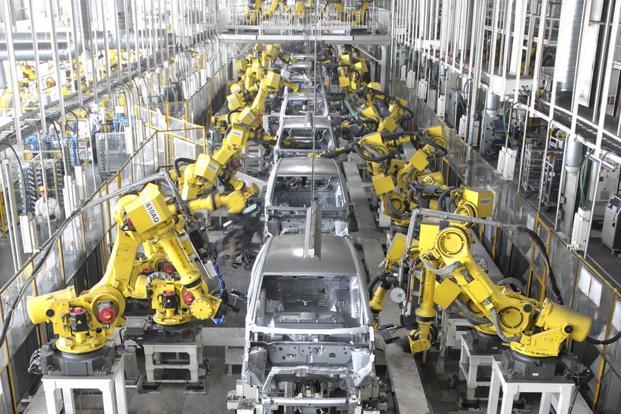
We love seeing the Internet integrated into everything from automobiles to smart homes. And As we move at light speed towards a true Internet of Things, a real revolution is happening in the energy sector.
All of us have enjoyed some form of automation in our lives for decades. Thanks to big industrial manufacturers like Siemens, GE, and Allen and Bradley. In refineries, chemical processing plants, auto manufacturers (and many more), automation has become synonymous with progress.
But a fundamental paradigm shift is taking place right now. In the past, we relied on robust, high-powered systems that ran on expensive and highly proprietary systems. That time is over. Revolutions in automation technology and lower costs are redefining what we can do with sensors.
Automation is becoming better (and cheaper)
Today, the cost of automation has dropped by one, two or even three orders of magnitude. Industrial automation and computing are coming out in Microcontroller Units (MCU) that are under $5 at wholesale prices. They can sometimes even cost less than a dollar.
In essence, small computers are now cheaper than a can of Coca Cola.
And as these manufacturers begin to scale, the price for smaller, complex function units will become extremely low. For instance:
- A pressure sensor that once cost several hundred dollars and was part of a whole proprietary industrial suite is now much less expensive and much more readily available
- Modular systems are being developed with APIs and custom circuits. A sensor that once cost about $250, for example, can now be purchased for $25 (or less).
- At the component level, we’re talking about purchasing for pennies wholesale. The innovators working with these components can offer units inexpensively even after the value-ad of their labor and design has been factored into the cost.
These processes make automation cheaper while reducing energy costs, increasing redundancy, and creating far more scalable systems.
The evolution of industrial sensors
In any industrial setting, whether a hydroponic greenhouse, a biofuel refinery, or a manufacturing floor, a huge portion of your cost is the infrastructure. You need to deliver energy to your equipment so that it can run reliably. And the more expensive the sensors, the less you get for your budget.
Now, you can give your site a technological nervous system. Rather than having a single powerful sensor, you have numerous less powerful (and less expensive) sensors. This means a network of interconnected, area-specific sensors all tracking important data.
Instead of tracking the CO2 output of your factory with one or two sensors located near the ceiling, you can track CO2 output across the entire factory floor and find out which units are producing the most gas. Using this information, you can create a data-driven map of gas concentration across your operations for less than it once cost for a few general-purpose trackers.
Cloud-based sensor networks saving energy (and money)
We’re thrilled to be using wireless sensor networks, too. These single-function units operate in a wireless cloud, powered by batteries or ambient energy harvesting.
Some of these sensors have a power draw measured in milliwatts or sometimes microwatts. They can be powered by solar or even radio frequency (RF). If what they’re sensing doesn’t need to be accounted for in real time, then energy savings reduce the need for power storage or power input.
These innovations lead to more than just clean and reusable energy sources. From a pragmatic standpoint, supplying power to a sensor is the most expensive part. You typically need a lot of copper wire and conduit for electricity, or fiber optics or Cat5 cables for communications. All of that adds up pretty quickly, especially when the infrastructure has to be centralized. This limits how many sensors you can put into the system.
Recent innovations have eliminated these limitations. As a result of redundancy, modularity, and the ability to self-power, it is now possible to place sensors where you have no access to your internal power grid. These items are capable of holding charges for months or even years. If they can charge themselves with ambient energy, their uptime can stretch on indefinitely.
And in the event a unit fails, core control systems will know right away and notify operations that it’s time to recharge or replace a unit. Since this unit is redundant, you won’t lose critical data collection during the time that it’s offline, either.
All these innovations have led to a boom in market activity. Information about how to build and use these units is now being freely exchanged (even between competitors). Professionals and hobbyists are sharing their findings. Big companies like Texas Instruments are giving away their methodologies in order to sell more components.
The future of data and energy
Innovations in sensor technology have already led to an exponential increase in the amount of data we can collect. But this data needs to be stored, tracked, analyzed and visualized. That’s where we come in.
While the Spry Group’s focus is on data, we’ve also studied sensor manufacturing and are beginning to design prototypes of our own. We want to work with like-minded innovators who will take these systems to the next level. These game-changers are going to optimize facilities in ways never before contemplated because of financial or technological limitations. Our goal is to revolutionize the industry using what we garner from machine learning.
Ultimately, we want to unite top-down econometric analyses with bottom-up operations so that CPOs and CFOs can see eye-to-eye on how to generate more profit from their core business.
